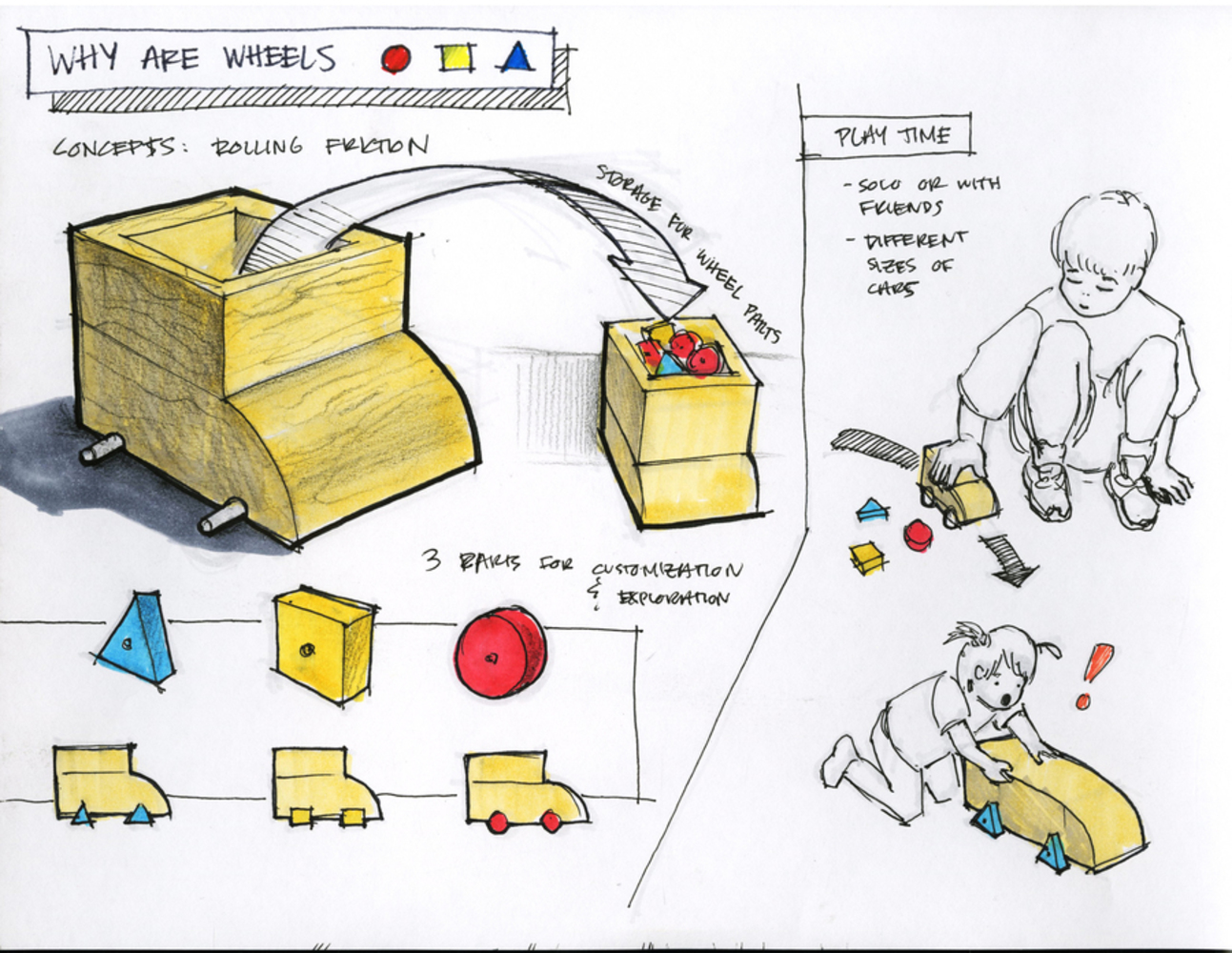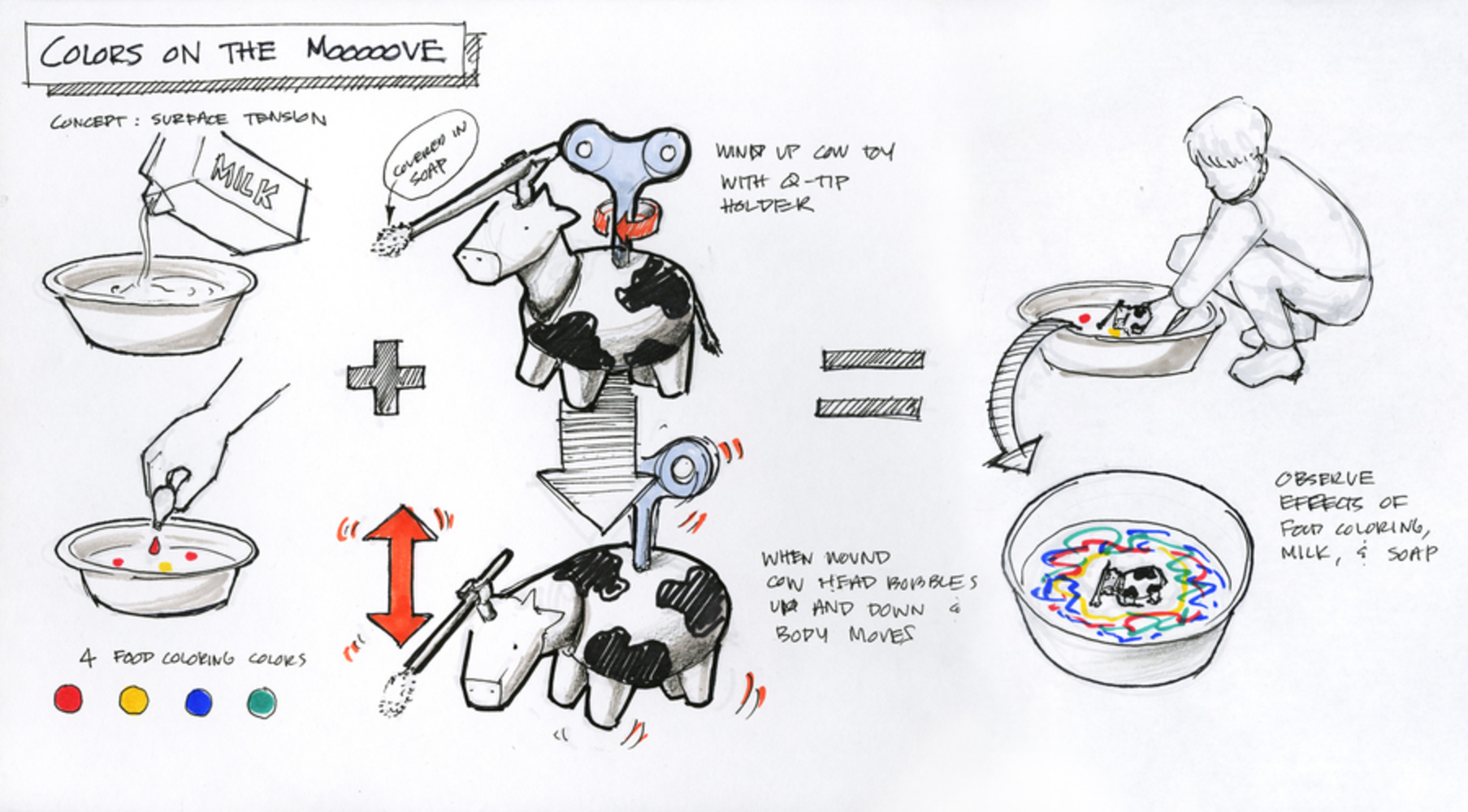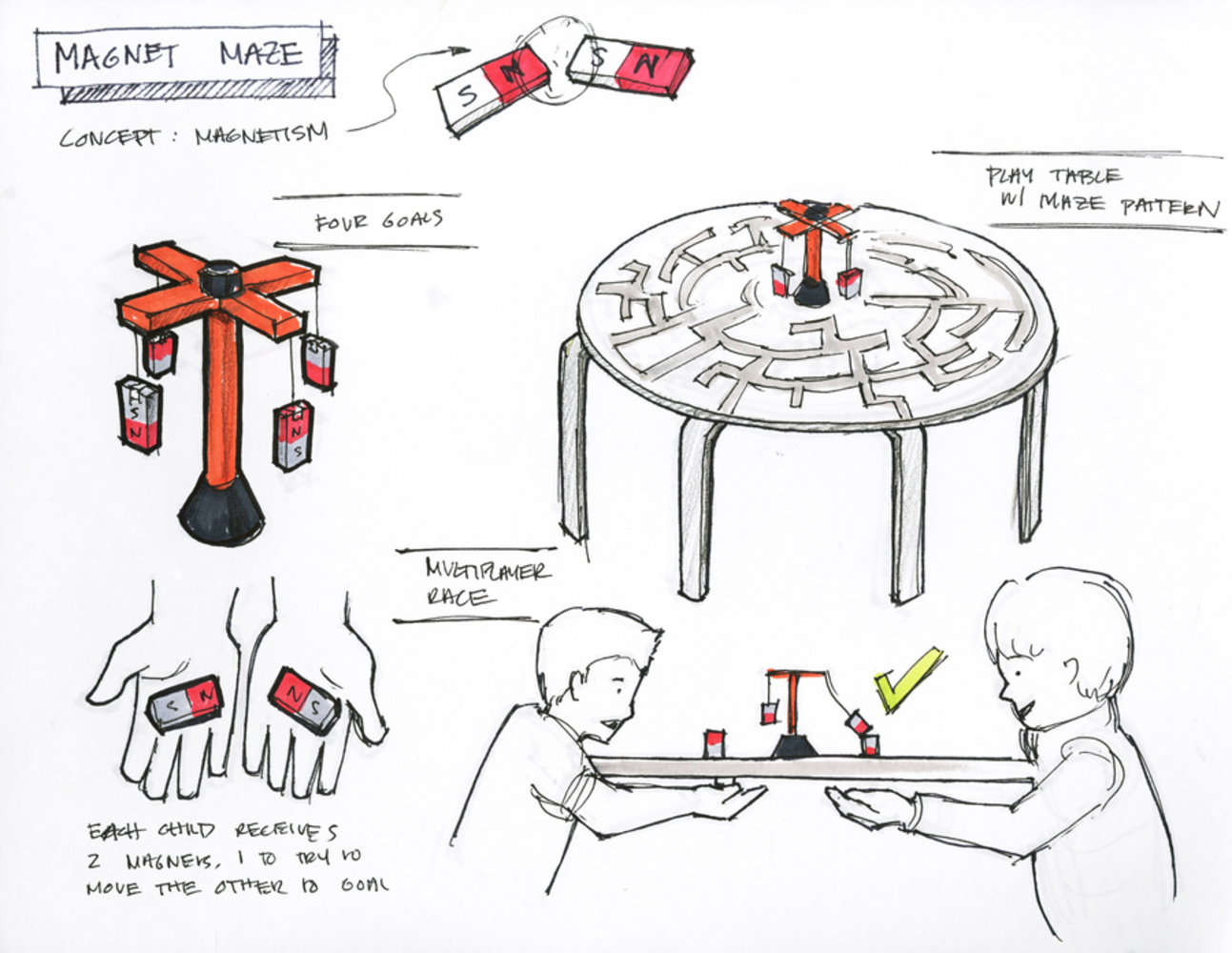Outcome
Principle: Rolling Friction
Interaction: Children ages 5-7 can change the wheels on the wooden toy cars to see what is the most effective way for the car to move. The extra wheel parts can be stored in the top trunk of the car. The extra weight of the storage also plays an effect on how well the car can move so children can experience what friction is.
Cost: would depend on the quality of the wood and paint so probably under $100 (1-3 different sized car models and many wheel parts)
Durability: Very durable
Safety: Relatively safe, wheel parts are too big to be swallowed.
Reflection: I learned that a lot of care and responsibility must go into creating toys for kids so that kids aren't accidentally harmed or are too challenged and become bored. As a kid I was always intrigued by customization and moving parts. I think kids naturally like taking things apart and thinking about worlds their toys can exist in. That's why having the ability to change the wheels gives kids not only an experience of what works better but maybe in a kid's mind, he or she likes a combo of squares and circles. There's no harm in making mistakes.
Principle: Surface Tension
Interaction: Children age 8-10 can observe the effects of milk, color dye, and soap with a wind up cow toy. After placing all the liquids in a container, children can wind up the cow and place it in the milk. The amount of winding will effect how much the colors are mixed.
Cost: $5 for milk (more if experimenting with different types of milk), $2 color dye, and $5-10 for windup cow toy
Durability: Wind up toy might not last if used / wound too much
Safety: Safe if there's no consumption
Reflection: I thought about how to jazz up a science experiment. My elementary school teacher let us play with these set of liquids to experiment and learn about surface tension. Kids can notice a lot of things, even at a young age. I remember it was noticeable that the color dye and milk resisted less as time went on so not all toys have to be games. I think observation is critical to learning and it doesn't always have to be about competition.
Principle: Magnetism
Interaction: Children age 10-12
Cost: $100+ because table is complex with maze and good magnets are expensive
Durability: Hard to break material
Safety: Strong magnets swallowed are dangerous but can be avoided with monitoring and large pieces
Reflection: I think this game would be very fun. From personal experience I've played with magnets and witnessed a lot of kids seeing the effect of the positive and negative poles of the magnet. Children are natural at trying out extreme cases like seeing if magnets still attract each other between lots of objects. That's why I got inspired to design a table maze because it's a challenging obstacle that's also open to a lot of experimentation.
Context
Many of these ideas came from toys that I remember playing with and fun personal experiences. I received a wooden car toy set as a holiday gift, did the milk/soap/color-dye experiment in elementary school, and I've seen many of my friends' siblings love playing with magnets.Reflection
I definitely had a lot of fun with the ideation process. I took a long time thinking about not only a toy concept but also how it could be instrumental in teaching children. It was difficult because there are already a lot of great projects and toys out there. If I had more time I would want to work on the specific details of each toy, if these toys are even feasible, and make the drawings more refined and understandable to all.You can upload files of up to 20MB using this form.


